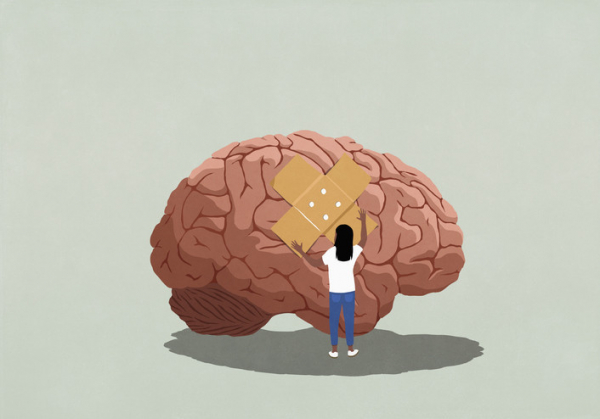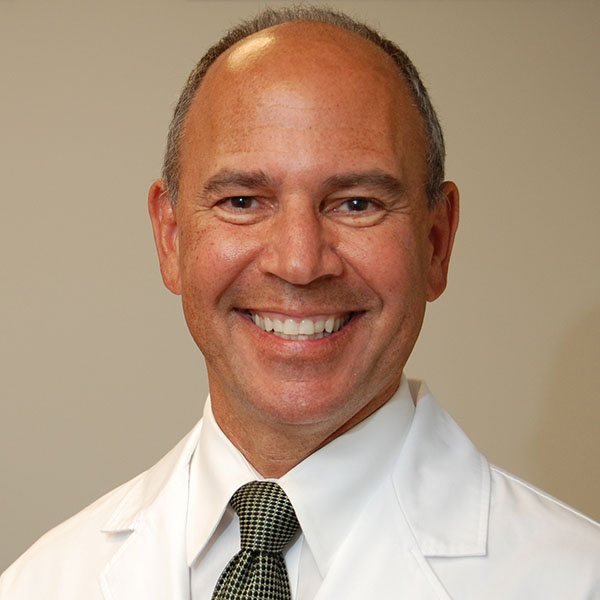
Concussion in children: What to know and do

Concussion is one of the most common injuries to the brain, affecting about two million children and teens every year. It is a particular kind of injury that happens when a blow to the head or somewhere else on the body makes the brain move back and forth within the skull.
It’s possible to get a concussion after what might seem like a minor injury, like a forceful push from behind, or a collision between two players in a football or soccer game.
What are the signs and symptoms of concussion?
Because the injury may not seem that significant from the outside, it’s important to know the symptoms of a concussion. There are many different possible symptoms, including
- passing out (this could be a sign of a more serious brain injury)
- headache
- dizziness
- changes in vision
- feeling bothered by light or noise
- confusion or feeling disoriented
- memory problems (such as difficulty remembering details of the injury) or difficulty concentrating
- balance or coordination problems
- mood changes.
Some of these are visible to others and some are felt by the person with the concussion. That’s why it’s important to know the signs and to ask all the right questions of a child who has had an injury.
Sometimes the symptoms might not be apparent right away, but show up in the days following the injury. The CDC’s Heads Up website has lots of great information about how to recognize a concussion.
How can further harm to the brain be avoided?
The main reason it’s important to recognize a possible concussion early is that the worst thing you can do after getting a concussion is get another one. The brain is vulnerable after a concussion; if it is injured again, the symptoms can be longer lasting — or even permanent, as in cases of chronic traumatic encephalopathy (CTE), a condition that has been seen in football players and others who have repeated head injuries.
If there is a chance that a child has had a concussion during a sports competition, they must stop playing — and get medical attention. It’s important to get medical attention any time there is concern about a possible concussion, both to be sure there isn’t a more serious brain injury, and to do a good assessment of the symptoms, so that they can be monitored over time. There are some screening questionnaires that are used by doctors that can be used again in the days and weeks after the concussion to see how the child is improving.
What helps children recover after a concussion?
Experts have struggled with figuring out how to protect the brain after a concussion. For a long time, the recommendation was to rest and do very little at all. This meant not doing any exercise, not going to school, not even reading or watching television. As symptoms improved, the restrictions were lifted gradually.
Over time, though, research showed that not only was this much rest not necessary, it was counterproductive. It turns out that getting kids back into their daily lives, and back into being active, is safe and leads to quicker recovery. Experts still recommend rest and then moving gradually back into activities, but the guidelines are no longer as strict as they once were.
One important note: A medical professional should guide decisions to move from rest to light activity, and then gradually from there to moderate and then regular activities based on how the child is doing. This step-by-step process may extend for days, weeks, or longer, depending on what the child needs. Parents, coaches, and schools can help support a child or teen as they return to school and return to activities and sports.
Some children will be able to get back into regular activities quickly. But for others it can take weeks or even months. Schools and sports trainers should work with children to support them in their recovery. Some children develop post-concussive syndromes with headache, fatigue, and other symptoms. This is rare but can be very disabling.
How can parents help prevent concussions?
It's not always possible to prevent concussions, but there are things that parents can do:
- Be sure that children use seat belts and other appropriate restraints in the car.
- Have clear safety rules and supervise children when they are playing, especially if they are riding bikes or climbing in trees or on play structures.
- Since at least half of concussions happen during sports, it’s important that teams and coaches follow safety rules. Coaches should teach techniques and skills to avoid dangerous collisions and other injuries. Talk to your child’s coaches about what they are doing to keep players safe. While helmets can prevent many head injuries, they don’t prevent concussions.
About the Author

Claire McCarthy, MD, Senior Faculty Editor, Harvard Health Publishing
Claire McCarthy, MD, is a primary care pediatrician at Boston Children’s Hospital, and an assistant professor of pediatrics at Harvard Medical School. In addition to being a senior faculty editor for Harvard Health Publishing, Dr. McCarthy … See Full Bio View all posts by Claire McCarthy, MD

Which skin creams are most effective for eczema?

Quelling the discomfort of atopic dermatitis, the most common form of eczema, can be a daily quest. This inflamed, itchy skin condition can interfere with sleeping, socializing, and many other activities.
If home remedies such as gentle cleansing and regular moisturizing don’t provide relief, your doctor might recommend a prescription treatment to apply to your skin. Which prescription cream is most effective? A new study boils it down to a few overall winners.
What is atopic dermatitis and the itch-scratch cycle?
Atopic dermatitis is a chronic inflammatory skin disease. The areas commonly affected include the face, hands, feet, or the skin folds of the elbows or behind the knees.
We don’t know exactly what causes atopic dermatitis. Genes, the environment, and an overactive immune system all seem to play a role in creating inflammation, which feels itchy. Scratching the itch creates more irritation and inflammation, which causes more itching.
As the itch-scratch cycle continues, the rash gets worse. The skin might tear, ooze, and crust over, which can be painful.
Which skin treatments were more effective in the study?
Some prescription topical skin treatments for atopic dermatitis are more effective than others, according to a 2023 study published online by The Journal of Allergy and Clinical Immunology.
Scientists evaluated more than 200 randomized trials involving more than 43,000 people with atopic dermatitis (average age 18). The researchers compared almost 70 different prescription creams or ointments, which are broadly called topical treatments and are designed to be applied to affected areas of skin.
These treatments fall into five categories. If you have eczema, their generic names may or may not be familiar to you, but your medical team is likely to know them well:
- topical corticosteroids, divided into seven classes ranging from the most to the least potent, decrease the release of an inflammatory chemical called phospholipase A2
- topical Janus kinase (JAK) inhibitors interrupt inflammatory signals as they enter cells
- topical PDE4 inhibitors raise the production of a chemical called phosphodiesterase-4, or PDE4, and lower the body’s inflammatory response
- topical calcineurin inhibitors help suppress the production of chemical messengers that tell the body to ramp up its defenses
- other topical treatments, including antibiotics and prescription moisturizers.
Researchers looked at which medications had outcomes important to patients, including which
- were best at improving quality of life
- were best at reducing eczema-related severity, itch, sleep disturbances, or flare-ups
- caused the fewest serious side effects
- were discontinued least often due to serious side effects.
Which atopic dermatitis medications proved to be most effective?
The study yielded some predictable results and a surprise. The overall winners were
- two calcineurin inhibitors: pimecrolimus (Elidel) and tacrolimus (Protopic)
- moderate-potency topical corticosteroids, a large group that includes fluocinolone acetonide (Synalar cream 0.025%) and triamcinolone acetonide (Kenalog cream/ointment 0.1%).
What did these medications improve?
- Pimecrolimus improved six of seven outcomes, and was among the best at reducing sleep disturbances and eczema flares.
- High-dose tacrolimus (0.1%) improved five outcomes, and was among the best at reducing itch and eczema flares.
- Moderate-potency steroids improved four to six of the seven outcomes, and were best at reducing eczema itch, flares, and serious side effects.
“That’s in line with what we often prescribe,” says Dr. Connie Shi, a dermatologist who often treats people with eczema at Harvard-affiliated Brigham and Women’s Hospital. “The strongest topical steroids appeared to be the most effective at reducing eczema severity in the study. However, for longer-term maintenance we may consider switching to a moderate-potency steroid, or one of the nonsteroid options, to minimize the risk of thinning the skin, which can occur with long-term use of topical steroids.”
The surprise finding: the study found little to no effectiveness from using a topical cream twice daily versus just once daily. “The traditional advice is twice daily,” Dr. Shi says. “Once a day would make it more convenient to use, and it may help people stay on their medication regimen without decreasing effectiveness.”
Which treatments were less effective in this study? The researchers found that topical antibiotics were among the least effective treatments for eczema.
Should you change your treatment?
“While the study included more than 40,000 people, what worked for participants may not always work for you, as different people may respond differently to the same treatment,” Dr. Shi explains. “There are many factors to consider when prescribing a treatment, including your age, the areas on your skin that are affected, the severity of the eczema, and potential side effects.”
The bottom line? “If a treatment regimen is working for you, then continue it, as long as you don’t have any serious side effects,” she says. “If your current regimen isn’t working well, talk with your doctor or a dermatologist to see if there’s another prescription cream or ointment that you may want to try.”
About the Author

Heidi Godman, Executive Editor, Harvard Health Letter
Heidi Godman is the executive editor of the Harvard Health Letter. Before coming to the Health Letter, she was an award-winning television news anchor and medical reporter for 25 years. Heidi was named a journalism fellow … See Full Bio View all posts by Heidi Godman
About the Reviewer

Howard E. LeWine, MD, Chief Medical Editor, Harvard Health Publishing; Editorial Advisory Board Member, Harvard Health Publishing
Dr. Howard LeWine is a practicing internist at Brigham and Women’s Hospital in Boston, Chief Medical Editor at Harvard Health Publishing, and editor in chief of Harvard Men’s Health Watch. See Full Bio View all posts by Howard E. LeWine, MD

How well do you worry about your health?

Don’t worry. It’s good advice if you can take it. Of course that’s not always easy, especially for health concerns.
The truth is: it’s impossible (and ill-advised) to never worry about your health. But are you worrying about the right things? Let’s compare a sampling of common worries to the most common conditions that actually shorten lives. Then we can think about preventing the biggest health threats.
Dangerous but rare health threats
The comedian John Mulaney says the cartoons he watched as a child gave him the impression that quicksand, anvils falling from the sky, and lit sticks of dynamite represented major health risks. For him (as is true for most of us), none of these turned out to be worth worrying about.
While harm can befall us in many ways, some of our worries are not very likely to occur:
- Harm by lightning: In the US, lightning strikes kill about 25 people each year. Annually, the risk for the average person less than one in a million. There are also several hundred injuries due to nonfatal lightning strikes. Even though lightning strikes the earth millions of times each year, the chances you’ll be struck are quite low.
- Dying in a plane crash: The yearly risk of being killed in a plane crash for the average American is about one in 11 million. Of course, the risk is even lower if you never fly, and higher if you regularly fly on small planes in bad weather with inexperienced pilots. By comparison, the average yearly risk of dying in a car accident is approximately 1 in 5,000.
- Snakebite injuries and deaths: According to the Centers for Disease Control and Prevention, an estimated 7,000 to 8,000 people are bit by poisonous snakes each year in the US. Lasting injuries are uncommon, and deaths are quite rare (about five per year). In parts of the country where no poisonous snakes live, the risk is essentially zero.
- Shark attacks: As long as people aren’t initiating contact with sharks, attacks are fairly uncommon. Worldwide, about 70 unprovoked shark attacks occur in an average year, six of which are fatal. In 2022, 41 attacks occurred in the US, two of which were fatal.
- Public toilet seats: They may appear unclean (or even filthy), but they pose little or no health risk to the average person. While it’s reasonable to clean off the seat and line it with paper before touching down, health fears should not discourage you from using a public toilet.
I’m not suggesting that these pose no danger, especially if you’re in situations of increased risk. If you’re on a beach where sharks have been sighted and seals are nearby, it’s best not to swim there. When in doubt, it’s a good idea to apply common sense and err on the side of safety.
What do Google and TikTok tell us about health concerns?
Analyzing online search topics can tell us a lot about our health worries.
The top Google health searches in 2023 were:
- How long is strep throat contagious?
- How contagious is strep throat?
- How to lower cholesterol?
- What helps with bloating?
- What causes low blood pressure?
Really? Cancer, heart disease and stroke, or COVID didn’t reach the top five? High blood pressure didn’t make the list, but low blood pressure did?
Meanwhile, on TikTok the most common topics searched were exercise, diet, and sexual health, according to one study. Again, no top-of-the-list searches on the most common and deadly diseases.
How do our worries compare with the top causes of death?
In the US, these five conditions took the greatest number of lives in 2022:
- heart disease
- cancer
- unintentional injury (including motor vehicle accidents, drug overdoses, and falls)
- COVID-19
- stroke.
This list varies by age. For example, guns are the leading cause of death among children and teenagers (ages 1 to 19). For older teens (ages 15 to 19), the top three causes of death were accidents, homicide, and suicide.
Perhaps the lack of overlap between leading causes of death and most common online health-related searches isn’t surprising. Younger folks drive more searches and may not have heart disease, cancer, or stroke at top of mind. In addition, online searches might reflect day-to-day concerns (how soon can my child return to school after having strep throat?) rather than long-term conditions, such as heart disease or cancer. And death may not be the most immediate health outcome of interest.
But the disconnect suggests to me that we may be worrying about the wrong things — and focusing too little on the biggest health threats.
Transforming worry into action
Most of us can safely worry less about catching something from a toilet seat or shark attacks. Instead, take steps to reduce the risks you face from our biggest health threats. Chipping away at these five goals could help you live longer and better while easing unnecessary worry:
- Choose a heart-healthy diet.
- Get routinely recommended health care, including blood pressure checks and cancer screens, such as screening for colorectal cancer.
- Drive more safely. Obey the speed limit, drive defensively, always wear a seatbelt, and don’t drive if you’ve been drinking.
- Don’t smoke. If you need to quit, find help.
- Get regular exercise.
The bottom line
Try not to focus too much on health risks that are unlikely to affect you. Instead, think about common causes of poor health. Then take measures to reduce your risk. Moving more and adding healthy foods to your meals is a great start.
And in case you’re curious, the average number of annual deaths due to quicksand is zero in the US. Still a bit worried? Fine, here’s a video that shows you how to save yourself from quicksand even though you’ll almost certainly never need it.
About the Author

Robert H. Shmerling, MD, Senior Faculty Editor, Harvard Health Publishing; Editorial Advisory Board Member, Harvard Health Publishing
Dr. Robert H. Shmerling is the former clinical chief of the division of rheumatology at Beth Israel Deaconess Medical Center (BIDMC), and is a current member of the corresponding faculty in medicine at Harvard Medical School. … See Full Bio View all posts by Robert H. Shmerling, MD